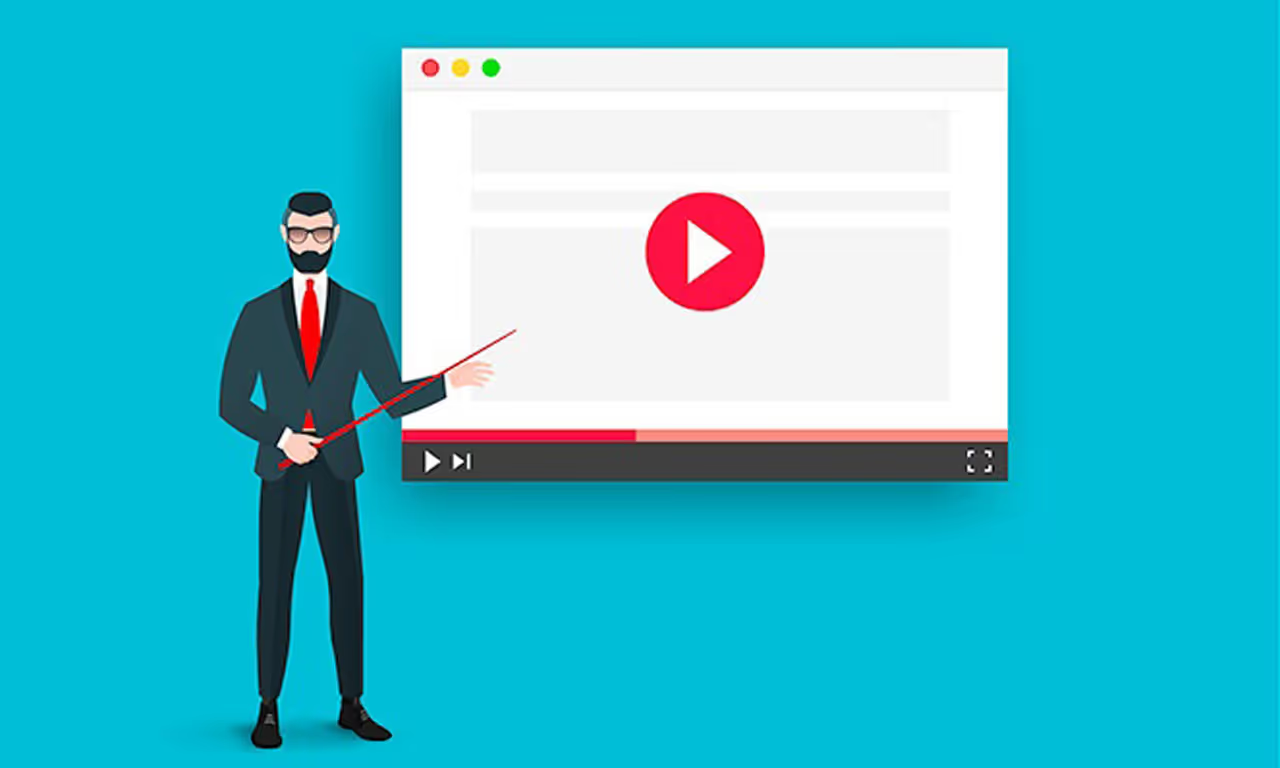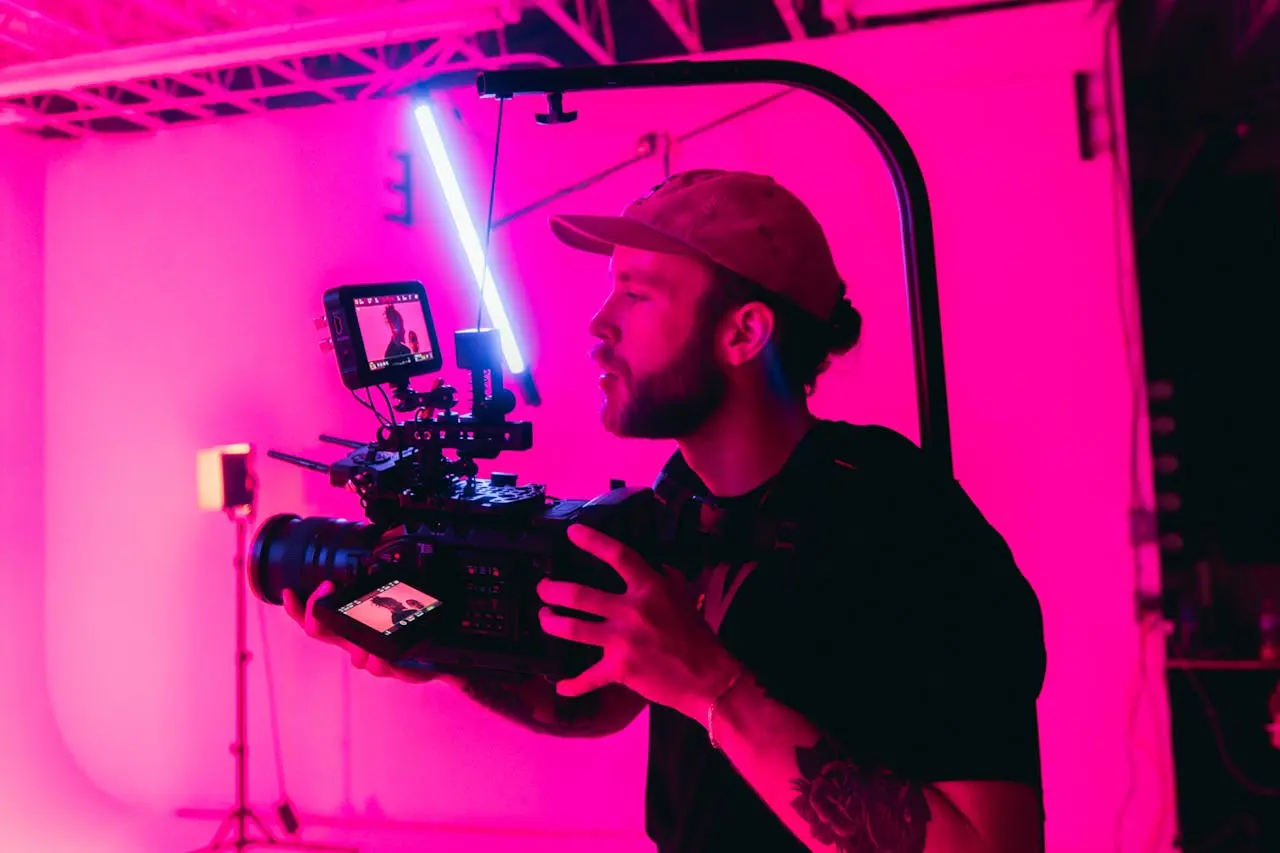Table of Contents
Training video is an effective way to share knowledge and teach skills to the audience. After all, most people can absorb information from the video instead of reading it directly from the text. Through training videos, you can explain concepts, walkthrough process, and share important information with your team in a more engaging way.
However, it is understandable that making training videos is more complicated and requires a lot of effort compared to just texting. Through this article, we will share in-depth explanations about ways and tips for making engaging training videos.
What are the types of training videos?
Animated Video

This training video usually uses visual animations such as graphics, text, and icons. These animated videos are perfect for explaining complex tutorials, ideas, and data because they are exciting and easy to watch.
Screencast Videos
This video tutorial type is the easiest to make and very affordable because it only relies on screencasts or screen recordings. This can work very well as an informal video usually used to inform coworkers. You can also create a more polished and edited video of your recording for training purposes.
Presenter Video
This type of training video includes moving objects or people in front of the camera. This is ideal when you have a charismatic speaker who is comfortable in front of the camera and can bring new hires into training.
How-to Videos
How-to videos are versatile for users. Depending on the actual content and your goals, they can be effortless and fast to create, or very time-consuming. For example, you could do a hybrid of talking heads videos with some screen recording elements for tutorials. Or, you can create a simple slideshow video with screenshots and process clips.
Employee-Created Videos

Employee-generated videos are a great way to share your employee's expertise with the rest of your company. It's not just for managers, any teammate can make one. Employee-generated videos are handy for documenting what you learn and sharing them with the rest of your company.
How to Create Training Videos
Define Your Objectives
Before you start creating your videos for training, it's crucial to identify your goals and objectives. Determine what specific information or skills you want to convey to your audience. Clearly define the learning outcomes you wish to achieve, as this will guide your content creation process and ensure a focused and effective training video.
Create Content Plan
Once you have your objectives in mind, it's time to plan your video's content. Breakdown the information into manageable sections or modules. Create an outline or storyboard that outlines the flow of your video, including the key points you want to cover and any visual aids or demonstrations you may need. A well-structured plan will help you maintain a logical sequence and deliver the content in a coherent manner.
Also Read: Choosing Short-Form vs. Long Form. Video Content: Which Work Best for You?
Choose the Right Equipment
While creating training videos, it's essential to have the right equipment to ensure high-quality production. Fortunately, you don't need expensive professional gear to get started. A good quality camera (such as a smartphone with ahigh-resolution camera), a tripod or stabilizer for steady shots, and a reliable microphone for clear audio are the basic essentials. Additionally, consider using screen recording software if you plan to demonstrate software applications or online processes.
Create a Quiet and Well-lit Environment
When shooting your training video, pay attention to the environment. Choose a quiet location with minimal background noise to ensure clear audio. Control the lighting to avoid harsh shadows or overexposure. Natural light is often the best option, so try to shoot near windows or use soft artificial lighting. Consistency in lighting conditions across all sections of your video will enhance its overall quality.
Prepare and Rehearse Your Script
Having a script or at least a detailed outline will greatly help you maintain a structured and concise delivery. Write a script that aligns with your storyboard and practice it to become comfortable with the content. While it's important to sound natural, rehearsing will ensure you cover all the necessary points without stumbling or losing focus. Remember to speak clearly and at a moderate pace, allowing your audience to follow along easily.
Record and Edit Your Video
Withall the pre-production preparations in place, it's time to start recording your training video. Set up your equipment as planned and begin shooting. Aim for steady shots, good framing, and clear audio. If you make mistakes or stumble during recording, don't worry; you can always edit those parts later.
Once you have completed the recording, import the footage into video editing software. Trim any unnecessary sections, add visual elements like text overlays or graphics, and enhance the audio quality. Use transitions between sections to create a smooth flow. Several user-friendly video editing tools are available that don't require extensive technical expertise.
Incorporate Engaging Visuals and Graphics
To make your training video more engaging, consider incorporating visual aids, graphics, and animations. Use relevant images, charts, or diagrams to support your content and make it visually appealing. Animations can be particularly useful for explaining complex processes or demonstrating step-by-step procedures. These elements will enhance comprehension and maintain the viewer's interest throughout the video.
Add Captions and Subtitles
Including captions and subtitles in your training video is highly beneficial. They make your content accessible to a wider audience, including those with hearing impairments or those who prefer watching video for training in a muted environment. Captions also help reinforce the key points, making it easier for viewers to understand and retain information.
Publish and Share Your Training Video
Once you have completed editing, it's time to publish and share your training video. Choose a suitable platform such as YouTube, Vimeo, or your organization's learning management system (LMS) to host your video. Make sure to optimize your video's title, description, and tags for better visibility in search results. Share the video through your website, social media channels, or email newsletters to reach your target audience effectively.
Capture Engaging Training Videos with Get Camera Crew
Looking to create high-quality training videos that engage and educate your audience? Look no further than Get Camera Crew! Our experienced camera crew is equipped with the latest equipment and expertise to bring your training content to life. Whether you need instructional videos, presenter videos, or how-to videos, our team will ensure a seamless production process from start to finish. With our professional services, you can easily create training videos that captivate viewers and deliver knowledge with impact. Contact Get Camera Crew today and take your training videos to the next level!
Training Videos FAQ
What should I include in my training video script?
Your script should include clear instructions, explanations, and demonstrations of the content you are teaching. Break down the information into logical sections and ensure a concise and structured delivery.
How can I make my training videos more engaging?
Incorporate visuals such as images, diagrams, or animations to support your content. Use relevant examples, real-life scenarios, and storytelling techniques to captivate your audience. Adding background music or sound effects can also enhance engagement.
Should I include captions and subtitles in my training videos?
Yes, including captions and subtitles is highly beneficial. They make your content accessible to a wider audience and reinforce key points. Captions also help viewers understand and retain information, especially for non-native speakers or individuals with hearing impairments.
How long should my training videos be?
The ideal length of a training video depends on the complexity of the topic and the attention span of your target audience. Aim for concise and focused content, keeping videos between 5 to 15 minutes whenever possible. However, remember to prioritize clarity and thoroughness over strict time constraints.
How can I effectively promote and share my training videos?
Utilize platforms such as YouTube, Vimeo, or your organization's learning management system (LMS) to host your videos. Optimize titles, descriptions, and tags for better visibility in search results. Share your videos through your website, social media channels, or email newsletters to reach your target audience.
How can I measure the effectiveness of my training videos?
Utilize analytics provided by hosting platforms or LMS to track metrics such as views, engagement, and feedback. Conduct surveys or assessments to gather feedback from viewers. Analyzing these metrics will help you understand the effectiveness of your training videos and make improvements if needed.






